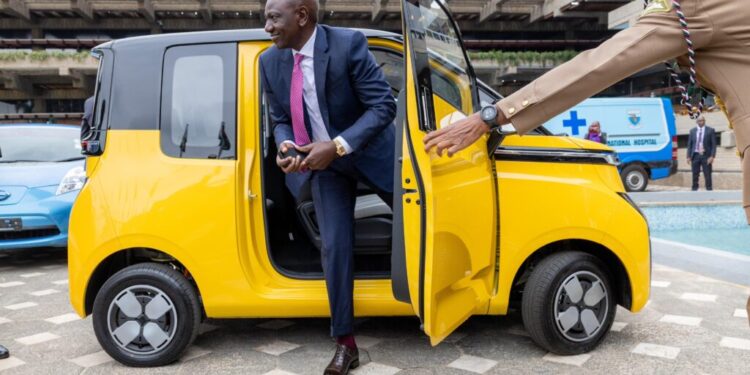Nairobi’s roads tell a unique tale of automotive preferences, with Land Rovers dominating the landscape. The robust Land Rovers and Range Rovers find favor due to their capability to navigate Africa’s challenging terrains and the historical ties between Kenya and Britain.
However, the prevalence of these vehicles raises questions about the enduring strength of such connections, especially in the face of an increasingly varied automotive population.
Land Rovers: From Series Classics to Contemporary Elegance
The Land Rover phenomenon in Nairobi spans from classic Series vehicles, reminiscent of bygone eras, to the contemporary luxury of Range Rovers. The old Series models, though cantankerous, stand ready for “rescue missions” in Nairobi’s bustling streets. Despite the influx of new Land Rovers, the traditional models endure, their utility extending beyond the urban sprawl.
The Unique Appeal of SUVs in Nairobi
Unlike the United States, where SUVs often stay on well-paved roads, Nairobi’s urban potholes and towering speed bumps make high-ground-clearance SUVs, including the Mercedes-Benz M Class and Toyota Land Cruiser, sensible choices. The city’s unique blend of safari opportunities and challenging urban terrain justifies the prevalence of these off-road-capable vehicles.
Tata’s Gamble: The Jaguar Conundrum
Tata Industries, having acquired Jaguar and Land Rover, faces challenges in establishing Jaguar’s presence in Nairobi. Despite the logical pairing of Jaguar showrooms with Land Rover lots, the luxury-performance sedans and upscale sports cars struggle to gain traction. The absence of other British luxury brands, such as Aston Martin and Rolls Royce, adds to the enigma.
Teutonic Invasion: German Luxury Dominance
German luxury cars, notably Mercedes-Benz, BMW, and Audi, have permeated Nairobi’s streets, overshadowing other high-end options. The omnipresence of Daimler-Benz has even led to the term “mbenzi,” signifying a rich man. The adaptation of smaller engine models, like the E and S200, challenges North America’s conventional wisdom of car sizes.
The Fall of France: French Carmakers in Nairobi
French car brands, notably Peugeot and Citroen, struggle to make an impact in Nairobi. The sight of older Peugeot models contrasts with the dwindling presence of Citroens, raising questions about the marketing strategies of these historically influential brands. The return of the DS designation as a separate car line adds to the uncertainty.
American Isolationism: U.S. Cars in the Shadows
American cars, such as Jeeps and a rare sighting of a Chrysler 300, play a minor role in Nairobi’s automotive scene. The prevalence of Japanese brands, such as Honda, Nissan, Subaru, Suzuki, and Toyota, further relegates American vehicles to the periphery. The Japanese manufacturers dominate the market with familiar and intriguing models unseen in the U.S.
Pacific Domination: Japanese Cars Reign Supreme
Japanese manufacturers dominate Nairobi’s roads, especially Honda, Nissan, Subaru, Suzuki, and Toyota. While some models are familiar to the U.S., intriguing variations, including wagons and hatchbacks, demonstrate the diversity of the Japanese car market in Kenya. The once-common Suzuki Samurais have made way for safer and modern alternatives, contributing to the city’s changing automotive ecology.
Nairobi’s Automotive Ecology: Balancing Tradition and Innovation
In conclusion, Nairobi’s automotive landscape reflects a delicate balance between tradition and innovation. While Land Rovers hold sway, newer entrants from Germany and Japan shape the city’s roads.
The struggle of iconic brands like Jaguar and the French automakers highlights this dynamic automotive ecosystem’s evolving preferences and challenges. As Nairobi navigates its unique blend of urban demands and adventurous terrains, the ecological impact of these diverse vehicles remains an aspect worth exploring.
Original Article: https://www.linkedin.com/pulse/cars-kenya-automotive-cultural-historical-assessment-clark/




